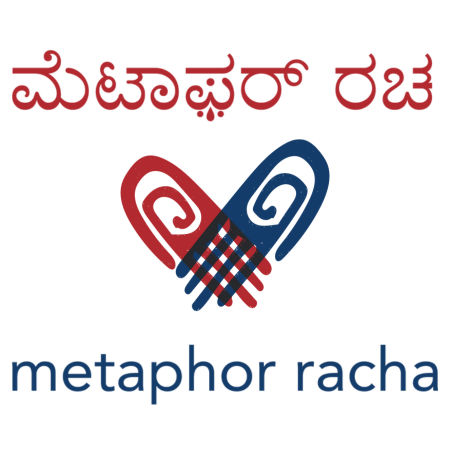I am not sure how many of you know that Saree, Dhoti, Towel, Bedsheet, Dhurrie, Dress material, Blankets/Kambali, Lungi, Shawl/Muffler, Woolen tweed, Mekhala, a total of 11 items cannot be woven on power loom or by the mill sector. By law, these specified products can only be hand-loomed.
Handloom Act, of 1985 (Reservation of articles for production) has an unsteady history.
1928: Widespread unemployment in the handloom sector.
1932: The Tariff Board enquiry, chaired by Dr John Matthai suggests providing yarn to the handloom weavers at a subsidised rate & recommends a fact-finding committee.
1942: The Fact-Finding Committee submitted its report recommending certain fabrics be reserved for the 2 million handlooms & to set up the All India Handloom Board.
1945: The All India Handloom Board was formed.
1950: The fact-finding committee recommends, Dhothi with border, lungi, bedcover, & any stripes/checks pattern be woven only on a handloom. Additionally, it restricts the mills not to weave fabric with low reed pick.
1952: A more serious rival to the handloom industry than the mills had arisen in the small-scale second-hand power loom machines run by handloom weavers themselves, while the Essential Commodities Act committee recommends the entire yarn production of spinning mills was to go to the handloom sector.
1952: Textile Enquiry Commission under the chairmanship of Nityanand Kanungo make a comprehensive enquiry & reveals the market share of 6500 million yards of fabric was 75% mill made, 3.5% power loomed, & 21.5% hand loomed.
1955: The Commission, noting the low-speed handloom production & low output, recommends a progressive conversion of handlooms into semi-automatic looms & power looms. This defining moment was during the 2nd Five Year Plan when 200 mn yards were allotted to the power loom industry considering the economic impact on the country.
1955: Karve Committee recommends freezing both mill & power loom output at existing levels. Also, government attempts at promoting hand spinning machine - The Ambar Charkha.
1964: The Ashok Mehta Committee recommends that power loom be allowed to acquire a paramount position in the textile economy of India.
1974: Sivaraman Comittee on Handlooms said, one power loom displaces six handlooms & pointed out the inadequacy of government support and the product reservation which benefited the power looms.
1976: The exemption given to power loom units with less than 5 looms was removed, and power loom took over handloom in terms of production. Consequently, by this time power loom sector had come to exercise enough political clout to scuttle any discriminatory assistance to handloom.
1978: National Handloom Finance and Development Corporation (based on recommendations of the Sivaraman Committee) was set up.
1980: For the first time power loom was recognized outside the rubric of the "decentralized sector" & was decoupled from handloom. But most of the measures remained on the paper.
1985: National Textile Policy differed from other textile policies with the shift in emphasis from employment potential to that enhancing productivity. Initially, 22 textile articles were reserved for exclusive production through handlooms but subsequently, these were reduced to 11 articles.
1986: The Handloom reservation act was challenged by power loom associations from various states in the Supreme Court & the SC ordered a stay on the implementation of the Act under the premise that it violated fundamental rights. The stay was vacated only in Feb 1993. During that period, power looms proliferated ’using loopholes in the law’ and began ’mass production of handloom items and marketed them at vastly lower prices.
1995: Meera Seth committee was appointed, & the major thrust of the report was to re-orient the handloom sector towards globalisation for its survival.
1999: Under the S. Satyam committee the main thrust was to make the textile industry globally competitive & the only option that the Committee saw in front of Handloom was to ’modernize’ by shifting to power looms. It recommended that the reservation act of 1985 and Hank Yarn Obligation be repealed.
2012: Handloom was defined as any loom, other than power loom; & includes any hybrid loom on which at least one process for weaving requires manual intervention or human energy for production".
2014: Due to pressure from the handloom sector & civil society, govt agreed on the status quo & not to change the definition of handloom.
2017: GST introduced on cotton yarn & handloom fabric.
2020: Dissolution of All India Handloom Board.
This information is compiled only to bring consumer awareness & in no way to demean any political party, hard-working individual, industry, or government agency. I extend due credit to the Ministry of Textiles, the Planning Commission, & many academicians like Mr Siddarth, a Doctoral student in public policy. Please be aware, considering the social media platform restrictions, I have tried to provide bite-sized information about the stringent policy or the lack of it, in good faith. However, I make no representation or warranty of any kind, expressed or implied, regarding the accuracy, adequacy, & availability of complete information. The Indian textile sector is more complex than it looks from the outside, so it requires a mindful approach to creating policy, its implementation, care for the craft/craftsperson & last but not least, questioning ourselves about consumer responsibility.
